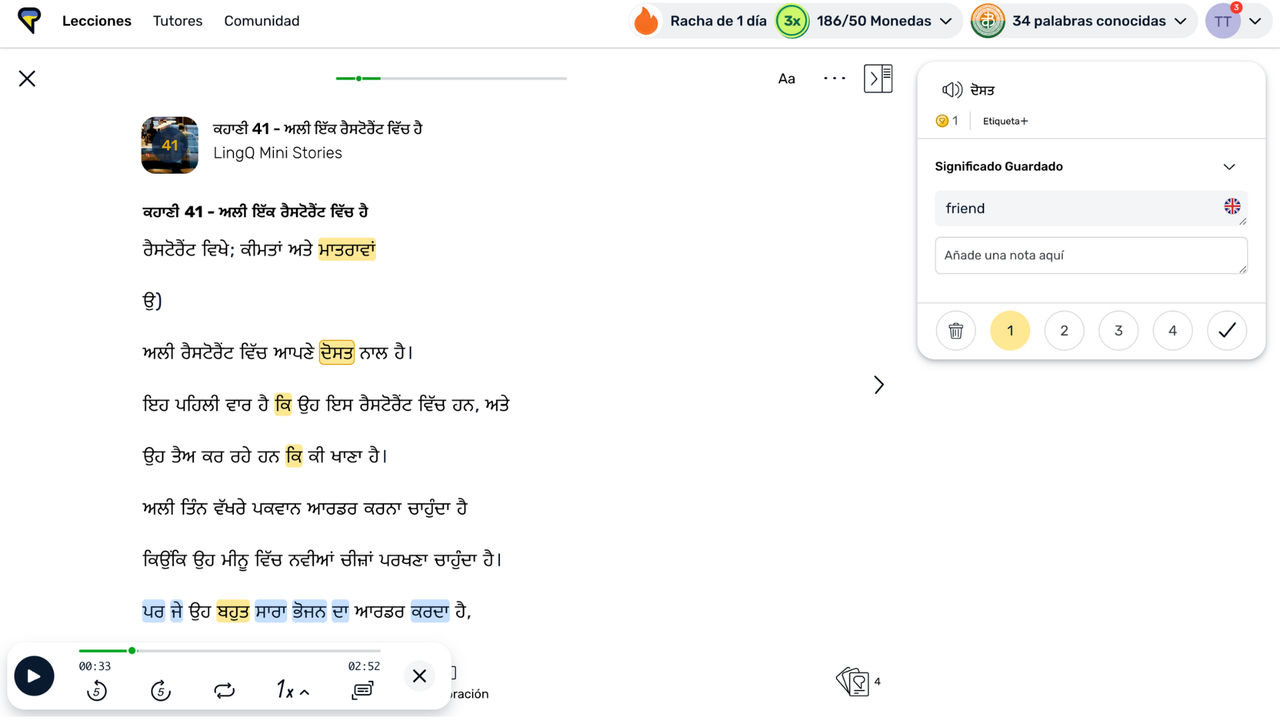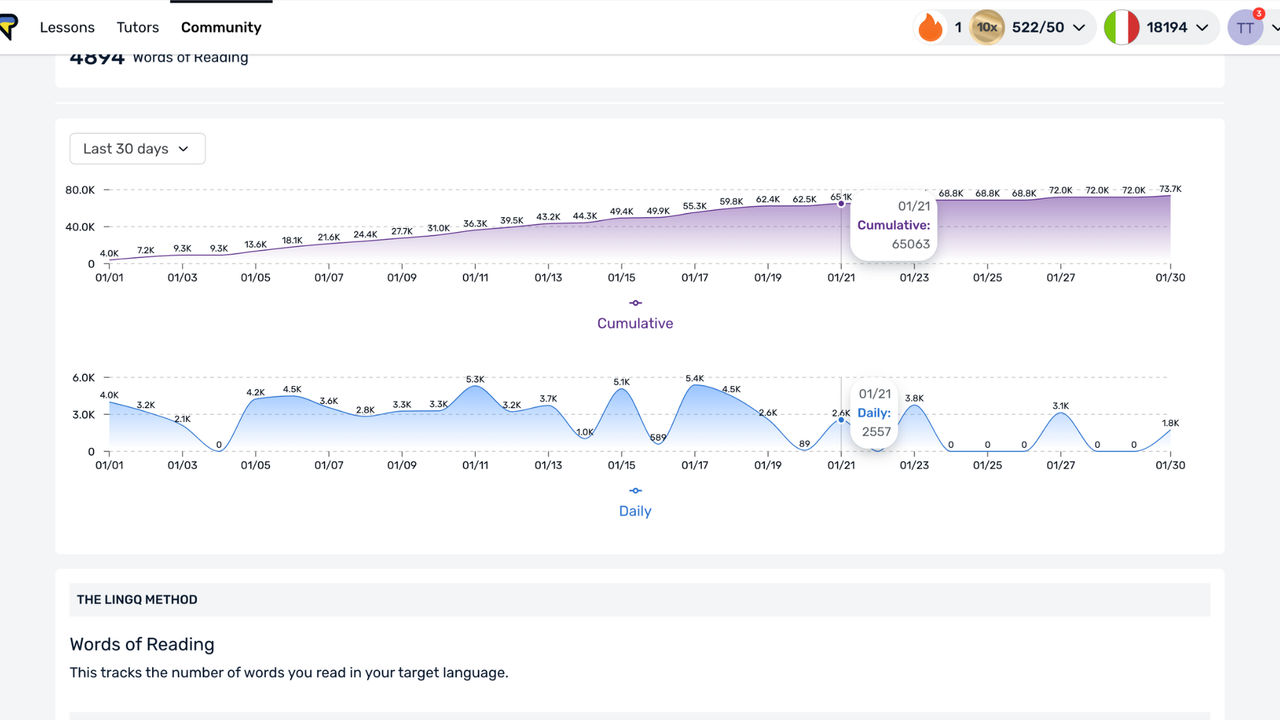Learn Punjabi: The Language of Five Rivers
ਸੱਤ ਸ੍ਰੀ ਅਕਾਲ! Punjabi is one of the most widely spoken languages in the world, with over 125 million native speakers across Pakistan, India, and the global diaspora. At LingQ, we’re excited to usher in Punjabi as our 50th language available for study on our platform. In this post, we’ll share with you some interesting facts about the language and tips to learn Punjabi.
Quick Facts about Punjabi
The name “Punjabi” comes from the Persian words “Panj” (five) and “Ab” (waters), referring to the five rivers of the Punjab region. Here are a handful of facts that highlight the uniqueness of Punjabi.
1. Punjabi has two different writing systems
Unlike most languages that have a single script, Punjabi is written in two different scripts: Gurmukhi in India and Shahmukhi in Pakistan.
2. Punjabi is a tonal language
Punjabi is the only Indo-European language that is tonal—a feature more commonly associated with languages like Chinese and Vietnamese. This means that the tone you use when pronouncing a word can change its meaning entirely.
3. Punjabi is a global language
Despite Urdu and English being Pakistan’s official languages, Punjabi has the highest number of native speakers in the country, with nearly 89 million people using it as their first language. However, it is not officially recognized at the national level, unlike in India, where Punjabi is an official state language.
Punjabi isn’t just spoken in South Asia—it’s a truly global language. In Canada, for example, Punjabi is the third most spoken language after English and French. Punjabi is also widely spoken in the UK, the United States, and Australia.
4. The Mahji dialect is standard
Punjabi has many dialects, but Majhi Punjabi, spoken in Lahore and Amritsar, is considered the standard form of the language. It is the basis for most media, literature, and formal education.
5. Punjabi has been influenced by many other languages
Punjabi has absorbed words from multiple languages over centuries. It has borrowed heavily from Persian, Arabic, and Sanskrit, and there are traces of Portuguese, Greek, Chinese, and English as well. Those who study Punjabi can appreciate its richness and cultural confluences.
Learn Punjabi on LingQ
LingQ is an ideal platform for language learners. In short, LingQ helps you read and listen to content in your target language more fluidly and consistently. If you want to learn Punjabi, here’s some key principles to help you learn this language successfully.
1) Build a consistent reading habit
This is crucial. Whether you’re a beginner or an advanced learner, consistently reading in your target language is essential to immerse yourself in the language. A common struggle among language learners is finding interesting (and level appropriate) content.
With LingQ’s vast libraries, it’s easy to find content that you’re excited to read and listen to in Punjabi. For beginners, we recommend starting with our mini-stories. These texts are short, filled with useful sentence structures, and written with high-frequency vocabulary.

While reading, you’ll notice that unknown words are highlighted blue, words that you’ve looked up are automatically saved and highlighted yellow, and words that are known are normal. On LingQ, you can visualize the difficulty of a reading and see your vocabulary grow as texts become less blue, more yellow, and eventually not highlighted at all!
Tip: Every lesson on LingQ is equipped with helpful review activities. Tackle a text sentence by sentence. Practice with flashcards, dictation activities, or translation.
2) Listen to Punjabi as much as you can
While reading enables you to expand your vocabulary and visually see how words fit together, listening allows you to grow accustomed to the sounds and rhythm of the language. Ample amounts of listening ensures strong comprehension skills and more natural speaking.
At LingQ, we emphasize reading and listening simultaneously. Our mini stories, for example, include recordings from native speakers to assist you in your reading. If you have a newspaper article, you can upload it into LingQ and automatically generate audio. If you only have an audio file, you can upload it into LingQ and quickly receive a transcript for you to read along with.
3) Stay consistent and gradually increase difficulty
At LingQ, a key milestone for a language learner is enjoying content designed for native speakers. If you read through mini stories with ease or seek a greater challenge, start studying with more advanced material.
LingQ is unique in that you can make custom learning lessons from your favorite content. Import books, YouTube videos, podcasts, or Netflix episodes into LingQ and instantly generate language lessons with content you love. After all, language learning should be an enjoyable process.
4) Set daily goals and track your progress
LingQ enables users to measure their progress more accurately. You can monitor your reading time, the amount of words read, vocabulary growth, and more on LingQ.

Setting daily goals and measuring your language learning activity helps you better gauge your consistency. You can clearly see how much your time spent with the language, what types of activities you did, and how much progress you’ve made in regards to text difficulty, vocabulary growth, etc.
Tip: LingQ offers a handful of challenges to keep you motivated and connect you to other LingQ users. For example, check our our recently launched book challenge!
Final Thoughts
If you’re learning Punjabi on LingQ, you’re diving into one of the most vibrant and historically rich languages in the world. Keep exploring, and who knows—you might just find yourself reaching new levels of fluency in no time!
Writer Bio

Tyler is an American language teacher and language learner. He’s taught Spanish, French and Latin in the K-12 system since 2018. Tyler also speaks Thai and Italian. Currently, he’s learning German and Polish on LingQ!